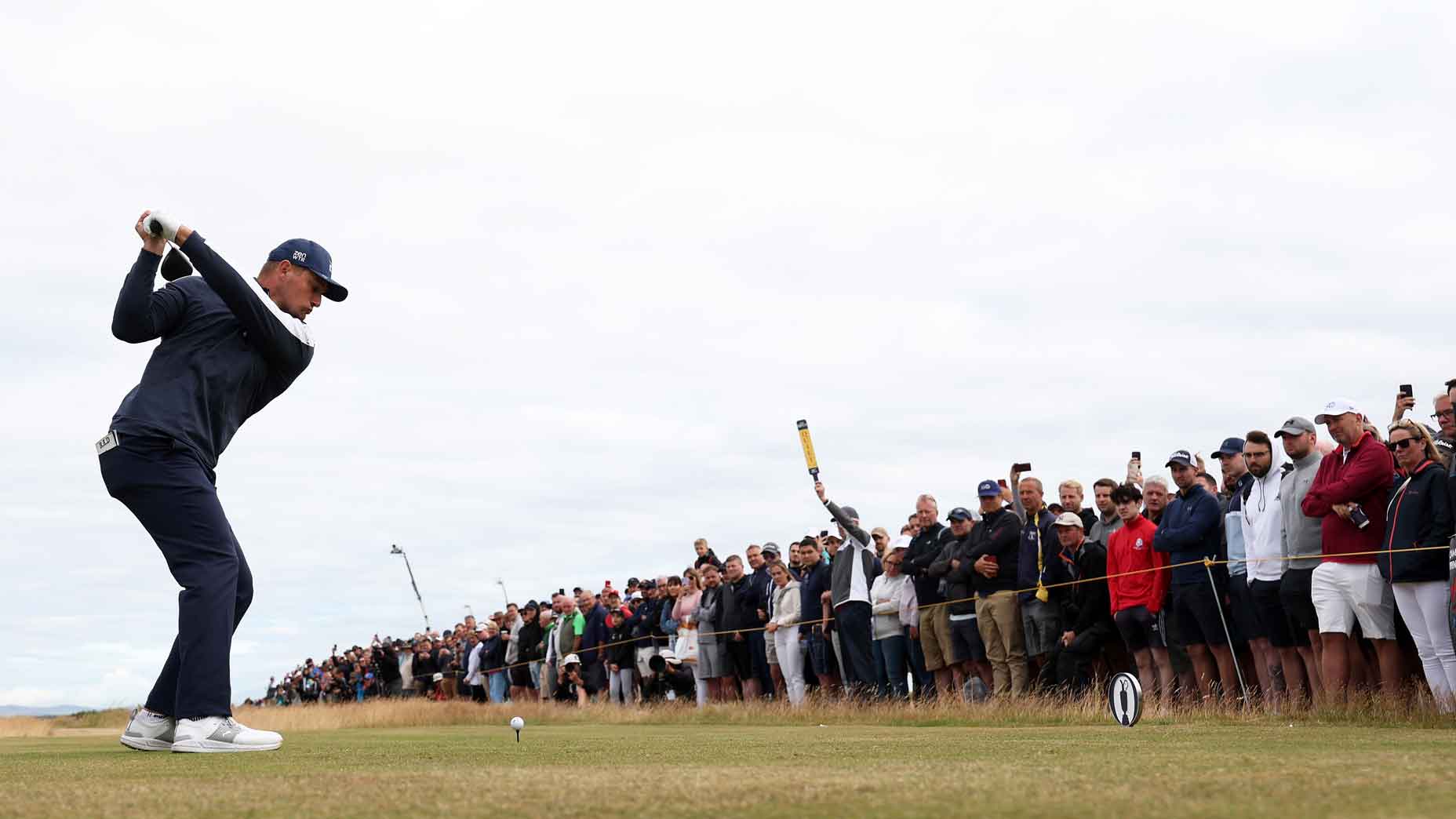Bryson DeChambeau isn’t concerned with conforming to the norm. He’s too focused on improving and figuring out ways to shoot the lowest scores possible, and he’s willing to take risks that most aren’t.
As a Cobra Golf staffer since 2016, DeChambeau has had access to all of the resources he needs to push the envelope of club design, and he works closely with Cobra’s team of equipment experts to craft prototype golf clubs he can test for functionality. His pit crew includes Ben Schomin, Cobra Golf’s head of tour operations, and Tom Olsavsky, VP of R&D. Between the trio, along with the rest of Cobra’s team of designers, they have developed some awesomely weird and wacky designs throughout the years.
In the “Tour Cage” at Cobra Golf’s HQ, where the Frankenstein-like club concoctions get built, there sit boxes upon boxes of DeChambeau’s old prototypes. They stay around for both nostalgia and future reference.

Inside the boxes, there’s an eclectic mix of previous experiments. There’s irons with hugely upright lie angles, wedges with chunks taken out of their heel sections, drivers that measure 4.8 degrees of loft, fairway woods with parallel rails of weld beads, a multi-material iron head that looks like it charges up in an electrical outlet, wedges with holes all over their back cavities, and others with seemingly pounds worth of Tungsten added to the soles.
In part two of our three-part “Building for Bryson” video series, GOLF’s Managing Equipment Editor Jonathan Wall went deep with Schomin and Olsavsky on the prototyping process.
For part three of the series, I picked out some of the coolest and most outlandish prototypes to test out for myself, with Schomin by my side to provide insight on each of their unique designs.
As I learned, each of the wild designs has a specific purpose. Schomin and DeChambeau manipulate lie angles, bounce angles, offset (or onset in some cases), degrees of loft and CG (center of gravity) in extreme ways to figure out what works and what doesn’t. While not all of the prototypes I hit ended up going into DeChambeau’s bag for competition, each of the clubs offered Cobra valuable insight for future designs.
From a testing perspective, I currently play to a 2-handicap and use what could be considered as a “normal” equipment setup, including standard variable iron lengths. With around 115 mph of driver speed, I use x-stiff shafts, standard size grips (with two wraps underneath), and lie angles that don’t stray far from stock. Just picking up one of DeChambeau’s clubs and you can feel a tremendous difference; the lie angles are very upright, his LA Golf prototype shafts are incredibly stiff, and the JumboMax grips feel huge. While I typically play a draw using my normal setup, nearly all of the shots I hit with DeChambeau’s prototypes went right of my target. I just couldn’t get the clubs squared up as usual – probably due to the stiff shafts and big grips – but it definitely eliminated my usual hook miss.
Hitting his clubs was an eye-opening experience into how drastically different DeChambeau does things with his gear, and also how much you can impact ball flight by altering equipment. I may even make some adjustments to my own setup after testing his prototypes.
Watch the video at the top of this article to see more on what it was like to hit DeChambeau’s club experiments, and continue scrolling for a closer look at some of the clubs we tested.
Photos of the Protos








Want to overhaul your bag for 2021? Find a fitting location near you at GOLF’s affiliate company True Spec Golf. For more on the latest gear news and information, check out our latest Fully Equipped podcast below!













